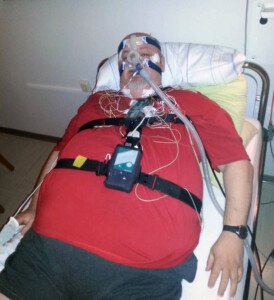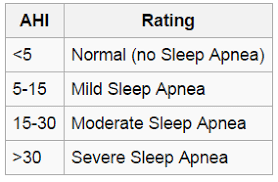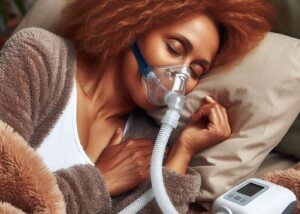
Is the mildness of sleep apnea determined by the patient’s daytime symptoms such as severity? Is it frequency of these symptoms? Or is it something else?
Well, believe it or not, you can be diagnosed with severe sleep apnea despite having mild — or even none whatsoever — daytime symptoms.
And likewise…you can be diagnosed with only mild sleep apnea yet have significant daytime symptoms.
Typically these are awakening with headaches, struggling to stay awake on the job or while driving, and suffering from problems with concentration.
What exactly is mild sleep apnea?
“It has nothing to do with symptoms,” says Dr. Nancy Foldvary-Schaefer, DO, MS, and Director, Sleep Disorders Center, Cleveland Clinic.
“Some of the worst apneics can deny symptoms at night and may not have daytime symptoms.”
So if all along you’ve been convincing yourself that you have “only mild” sleep apnea because you don’t feel any daytime symptoms – and you have not undergone a sleep study – you’ll want to take your self-assessment to a sleep medicine physician.
Definition of Mild Sleep Apnea in Adults
• AHI stands for apnea hypopnea index.
• A sleep study reveals an AHI between five and 15.
• AHI is the same as RDI (respiratory disturbance index) and REI (respiratory event index).
• The numerical range (e.g., five to 15) refers to average number of abnormal breathing events per hour.
Example: The patient sleeps for seven hours. The study records a total of 49 disordered-breathing events.
Forty-nine divided by seven equals seven: an AHI of seven.
It doesn’t matter if during one particular hour, there were zero events, and for another hour there were only two.
The TOTAL number of events is divided by the total time of slumber to get the result.

Sleep study in a lab. NOTE: Thin people, too, can have OSA! Halicki, CreativeCommons
The vast majority of diagnosed sleep apneas are of the obstructive type, in which there’s a complete collapse of the upper airway overnight for at least 10 seconds.
“Central” sleep apnea is when the brain fails to send the signal to breathe, even though the airway may be perfectly functioning during this time.
Mild Sleep Apnea Cannot Be Observed
Whether OSA is mild, moderate or severe cannot be determined via observation by a bed partner or someone standing over the sleeper and watching him or her breathe.
For example, the sleeper’s chest/abdomen may never pause with rising and falling, but there could still be upper airway obstruction.
If there’s a struggle to breathe (as opposed to a long pause), this could be caused by a partial airway collapse rather than a complete collapse. This is a hypopnea rather than an apnea.
A witness cannot detect when hypopnea occurs. What appears to be a struggle to inhale may also be caused by acid reflux or another condition.
This is why a sleep study is so important.
The AHI for mild sleep apnea, being five to 15 events per hour, may consist entirely of hypopneas (breathing continues but is labored due to partial airway collapse).
Don’t feel smug if your test result is mostly or even all hypopneas rather than apneas, because a night full of only hypopneas is just as damaging to the body as apneas if untreated.
If you have overnight symptoms suggesting sleep apnea (snoring, snorting, gasping, long pauses between breaths), yet NO daytime symptoms – do NOT assume you have “only mild” sleep apnea.
Only a sleep study (polysomnography) can determine your AHI.

Degree or frequency of daytime symptoms, or lack thereof, are never indicative of AHI and thus not suggestive of whether or not the suspected OSA is mild.
If a sleep study shows that all of your abnormal events are hypopneas, you’d still be diagnosed with sleep-disordered breathing, whether it’s mild, moderate or severe according to the AHI.

 Certified by the American Board of Neurology and Psychiatry in Neurology, Clinical Neurophysiology and Sleep Medicine,
Certified by the American Board of Neurology and Psychiatry in Neurology, Clinical Neurophysiology and Sleep Medicine, 
























